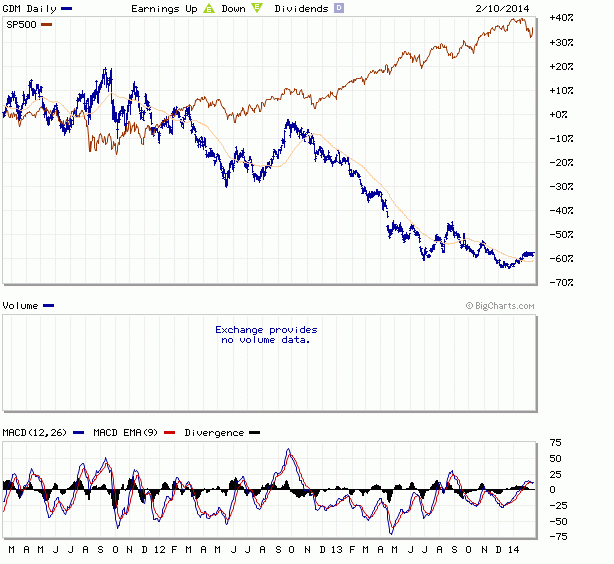Gold Mining Shares May Be Attractive Once More: At Least More Than Gold Itself

Gold mining equities have become attractive to investors once more, after spending years out of fashion as respectable investments, given corporate governance problems and ballooning capital budgets.
Given a volatile financial environment, it makes sense to look at assets that were “absolutely punished and massively sold” in the past, said J2Z Advisory principal Jay Pelosky, who advises clients on more than $3 billion in assets, to IBTimes. “Gold miners fit that bill very well.”
The broad strategy is simple. Gold mining equities have been punished for several months, with steep share depreciation worse than gold’s historic 28 percent prince plunge in 2013. High capital expenditures in boom years, where gold prices rose for 12 straight years, meant miners offered little to shareholders in returns. Shareholders have returned the favor lately.
The NYSE Arca Gold Miners Index, which tracks gold miners’ shares, has fallen more than 60 percent in the past three years, compared to gains of more than 30 percent for the S&P 500. Companies on the index include Barrick Gold (TSE:ABX), the world’s largest gold miner, and other top producers like Goldcorp Inc. (TSE:G) and Newmont Mining Corp. (NYSE:NEM).

Now such stocks may have bottomed. In other words, they’re so heavily discounted that they look like an irresistible bargain. To boot, the industry as a whole may be reaching a turning point.
There’s now an opportunity for gold miners to demonstrate their independent worth as companies, rather than pure investment plays on gold prices, Pelosky told IBTimes. Significant executive shuffles and moves to reduce all-in sustaining costs are encouraging industry reforms on this front.
“Significant corporate action, hostile bids in Canada, the discussions of mergers in Australia: All of these suggest upside for the miners, with limited downside,” he said.
Pelosky owns shares in GDX, an exchange-traded fund based on the gold miners’ index, and also owns gold through SPDR’s GLD fund.
Gold miners’ stocks are trading at their lowest level since 2008, said ETF Securities in a note on Feb. 5.
“We believe they have reached a point where upside potential now far outweighs downside risks, making this a good entry point for investors with medium-term time horizons,” the report read.
ETF Securities estimated that gold miners’ costs, which can cut close to gold’s selling price and squeeze profits, fell 15 percent in the third quarter of 2013, over the previous quarter. Gold mining companies may be seriously reining in costs, a longtime talking point that takes time to show results.
The worst of costly one-time charges, which hit the industry as projects were delayed and gold prices worsened in 2013, may also be over, said ETF Securities.
Pelosky and ETF Securities aren’t the first to make the call, which has seen interest among precious metals investors.
CPM Group said in an early December report that gold equities would likely rise in prices faster than gold itself in 2014. ETF Securities also said gold miners would likely outperform gold. Many analysts see sluggish gold prices in 2014, with few analysts projecting prices above $1,300 per ounce.
ETF Securities estimated that gold miners’ shares now trade at a 4 percent discount to a company’s total assets minus liabilities. Companies with shares below “book value” are theoretically acquisition targets, since the sum of net assets is more valuable than shares suggest: This indicates that stocks are importantly discounted.
The world’s largest gold miner, Barrick Gold, reports earnings on Feb. 14. Other gold mining companies, like Newmont and AngloGold Ashanti (JSE:ANG), also report in February.
Barrick’s switch from longtime company founder Peter Munk, now 86, to leadership by former Goldman Sachs Group Inc. (NYSE:GS) executive John Thornton, may signal a broader shift in the mining industry, as mining execs start to run their companies better.
© Copyright IBTimes 2024. All rights reserved.












